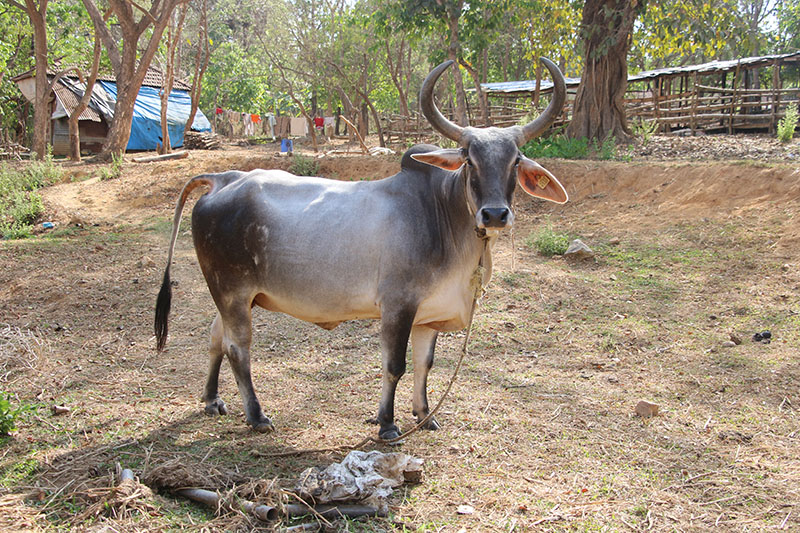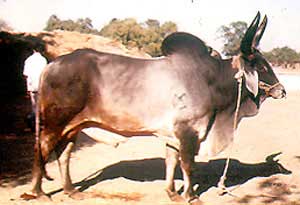Kankrej Cattle
Also Known by: Bannai, Nagar, Talabda, Vaghiyar, Wagad, Waged, Vadhiyar, Wadhiar, Wadhir, Wadial.
The Kankrej breed of cattle gets its name from a territory of that name in North Gujarat of Bombay Province, India. The breed comes
from southeast of the Desert of Cutch in western India, particularly along the banks
of the rivers Banas and Saraswati which flow from east to west and drain into the
desert of Cutch.
a territory of that name in North Gujarat of Bombay Province, India. The breed comes
from southeast of the Desert of Cutch in western India, particularly along the banks
of the rivers Banas and Saraswati which flow from east to west and drain into the
desert of Cutch.
In Radhanpur State, which is adjacent to the Kankrej tract, the breed is known as Wadhiar. In Cutch State it is known as Wagad or Wagadia, taking its name from the community of herdsmen who breed these cattle.
Characteristics
The Kankrej is on of the heaviest of the Indian breeds of cattle.
 Color varies from silver to gray to iron gray or steel black. Newly born calves have
rust red-colored polls, this color disappearing within 6 to 9 months. Forequarters,
hump and hindquarters are darker than the barrel, especially in males. The switch
of the tail is black in color. The forehead is broad and slightly dished in the center.
The face is short, and the nose looks slightly upturned. The strong lyre-shaped horns
are covered with skin to a higher point than in other breeds. The ears are very characteristic,
being large, pendulous and open. The legs are particularly shapely and well-balanced
and the feet small, round and durable. They are active and strong. The hump in the
males is well-developed and not so firm as in some breeds. The dewlap is thin but
pendulous and males have pendulous sheaths. Pigmentation of the skin is dark and the
skin is slightly loose and of medium thickness. Hairs are soft ad short.
Color varies from silver to gray to iron gray or steel black. Newly born calves have
rust red-colored polls, this color disappearing within 6 to 9 months. Forequarters,
hump and hindquarters are darker than the barrel, especially in males. The switch
of the tail is black in color. The forehead is broad and slightly dished in the center.
The face is short, and the nose looks slightly upturned. The strong lyre-shaped horns
are covered with skin to a higher point than in other breeds. The ears are very characteristic,
being large, pendulous and open. The legs are particularly shapely and well-balanced
and the feet small, round and durable. They are active and strong. The hump in the
males is well-developed and not so firm as in some breeds. The dewlap is thin but
pendulous and males have pendulous sheaths. Pigmentation of the skin is dark and the
skin is slightly loose and of medium thickness. Hairs are soft ad short.
The Kankrej cattle are very highly prized as fast, powerful draft cattle. They are also fair producers of milk.
These cattle are resistant to Tick fever and they show very little incidence of contagious abortion and tuberculosis. It has also been observed that the red color is recessive.
References
Joshi, N.R., Phillips, R.W. (1953) Zebu Cattle of India and Pakistan, FAO Agriculture Studies No. 19, Publ. by FAO, Rome, 256 pp.
Mason, I.L. 1996. A World Dictionary of Livestock Breeds, Types and Varieties. Fourth Edition. C.A.B International. 273 pp.
